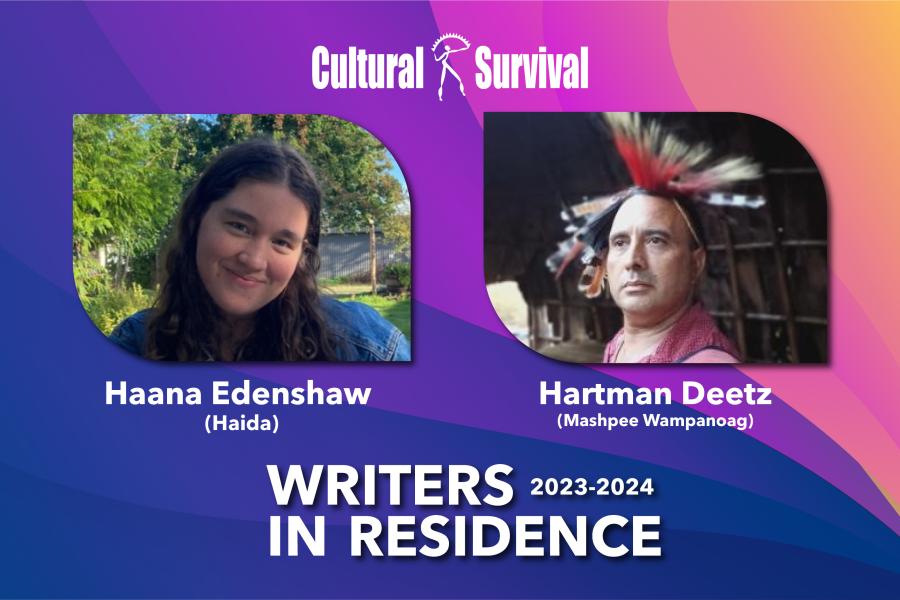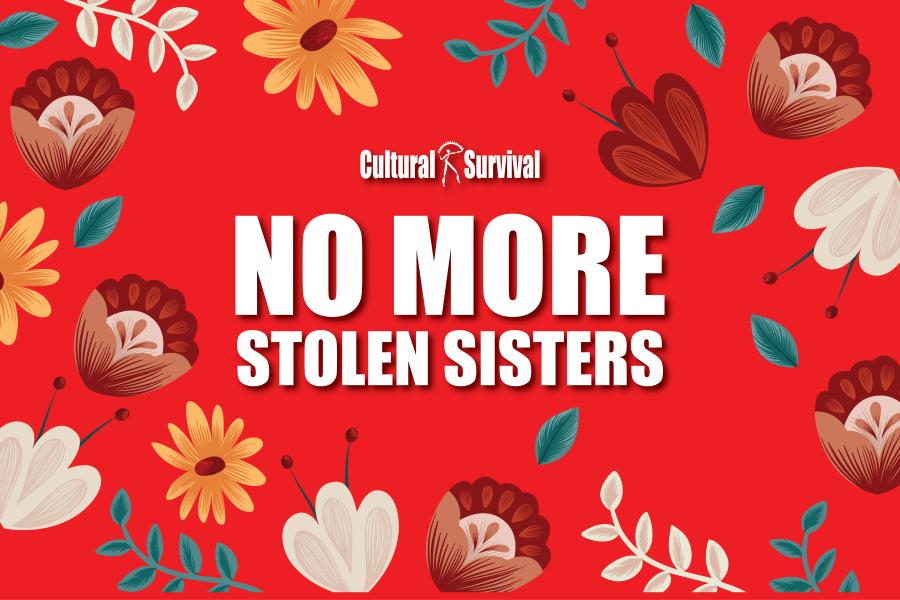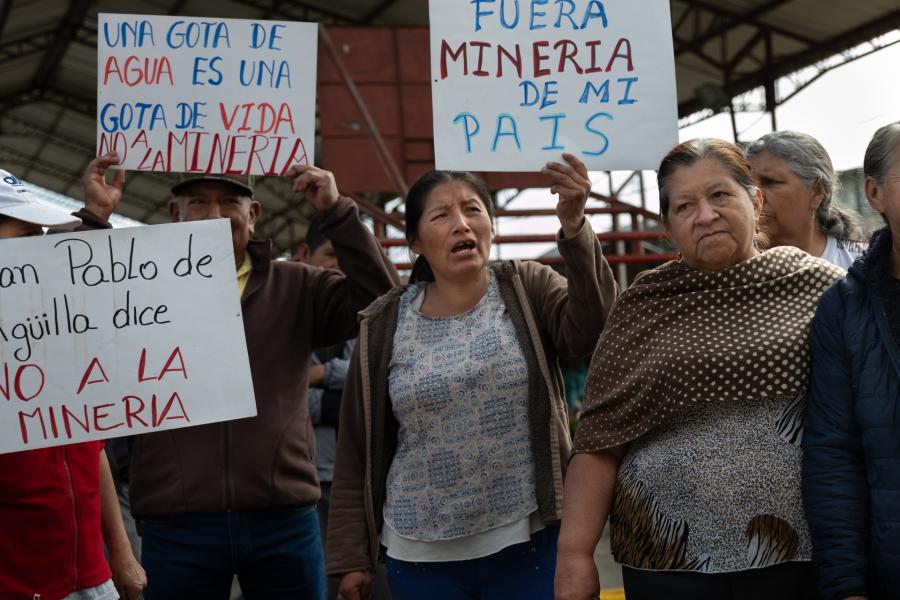More than 11,000 people from 175 nations gathered in Geneva, Switzerland, two years ago to discuss the digital revolution that in a matter of years has changed the lives of nearly everyone on the planet.
The United Nations and the International Telecommunication Union convened the World Summit on the Information Society (WSIS) to address the potential new technology holds, and also tackle the challenge of creating an all-inclusive and equitable information society by bridging the digital divide between developed and developing nations. Indigenous peoples, who recognize the importance of information technology in securing their own futures, are making a place for themselves inside WSIS.
The 2003 meeting in Geneva was considered the first phase of WSIS. The second-phase meeting is scheduled to take place in Tunis, Tunisia, on November 16-18. During the Phase I meeting, representatives of governments, private corporations, and the civil sector, adopted a Declaration of Principles and a Plan of Action to guide their work leading to Tunisia and beyond (both documents are available online here). During Phase II, these groups will reconvene and discuss the implementation of the Plan of Action, as well as mechanisms for financing that implementation and governing the internet.
Making their Case
Indigenous peoples’ efforts to be included in WSIS started with the Global Forum of Indigenous Peoples and the Information Society (GFIPIS), which took place in conjunction with Phase I of WSIS.
" Indigenous peoples are part of your populations … and as such they deserve the equitable access to new technologies,” Ole Henrik Magga, then-president of the U.N. Permanent Forum on Indigenous Issues, told the WSIS plenary in Geneva. “They do not seek inclusion at the expense of their rights, cultural identities, traditional territories or resources. It must be indigenous peoples themselves who decide on how and when they access and use new technologies.”
The government of Canada and the Aboriginal Canada Portal and Connectivity Working Group, in cooperation with indigenous peoples, the Permanent Forum, and other U.N. agencies, helped organize the GFIPIS. Indigenous delegates wrote their own Plan of Action, which Ole Henrik Magga presented to the wider WSIS meeting. As a result, indigenous concerns were included in to the WSIS Declaration.
From Declaration to Action
Now that indigenous peoples' special interests and concerns regarding information technology have been recognized on paper, they are organizing to ensure they are remembered when nations set out to implement the WSIS Plan of Action. Despite the indigenous delegates’ success at WSIS Phase I, indigenous peoples’ lack of access to information technology is making them increasingly marginalized as the world integrates technology into economic and social development projects and governance structures
" In order for our children to participate on an equal level with leaders of the future they need to have the same access and training with computers and the internet as children from all cultures," said Jack Penashue, an Innu from Sheshatshiu, Labrador, where many Innu children have little or no access to computers.
Indigenous peoples involved in the WSIS movement say that to protect their interests they need to be a part of the digital revolution and decide for themselves how they want to use new technologies. For some, intellectual property rights are the greatest concern. Some American Indian tribes, for example, refuse to put information about their cultures online because they believe that traditional knowledge should be passed on in specific ways to specific peoples, not haphazardly to anyone who happens to come across a website.
No matter how or whether they want to be involved in technology, indigenous peoples insist that they need to take advantage of the WSIS goal and be in the forefront of its work to create an equitable information society.
" The biggest threat of the information society is the lack of protection of indigenous people," said Ken Deer, editor of the Mohawk newspaper The Eastern Door. " We hope through WSIS we can help close that gap and get what indigenous peoples need—hardware, software, and training."
In March, the Aboriginal Canada Portal and Connectivity Working Group hosted a WSIS Indigenous Thematic Planning Conference in Ottawa, Canada, to prepare for WSIS Phase II. In this meeting, indigenous peoples from around the world, as well as several representatives of the Canadian government, shared the work they were already doing to make indigenous peoples a part of the information society. They discussed online applications for improving public health and governance, the role of new technology in indigenous media and the arts, and the influence the digital revolution has had on culture, gender, and the U.N. Millenium Development Goals.
At the close of the Ottawa meeting, participants launched the WSIS International Indigenous Steering Committee. This group will help send indigenous peoples to Tunisia, ensure a robust and inclusive agenda for indigenous peoples at the Phase II meetings, and work to keep international dialogue regarding indigenous connectivity open beyond the Tunisia meetings.
The steering committee is composed of two indigenous members (one male and one female) from each of the seven regions of the world that are recognized by the Permanent Forum; one state member from each of the seven regions; and additional members from U.N. agencies, non-governmental organizations, the private sector, and the academic community. Several sub-committees of the steering committee will meet on a more informal basis.
The Aboriginal Canada Portal's support of the global forum and planning meetings has allowed indigenous peoples to take major strides in the WSIS process, but the Canadian government has said its support cannot continue unless other nations do their part.
" If we don't get other partners, we won't be able to show the same leadership as in Geneva," said Dan Hughes, senior adviser for human rights at Indian and Northern Affairs Canada.
As the articles in this issue of Cultural Survival Quarterly attest, supporting indigenous peoples' involvement in the world information society holds as many benefits for states as it does for indigenous peoples. When they have the opportunities and the tools, Native communities are using technology to contribute to nations’ cultural arts, devising new ways to provide services to populations spread out over great distances, and helping to rebuild democracies following years of civil war.
Jamie Brown is the information technology specialist and webmaster for Cultural Survival. Tara Tidwell Cullen is managing editor of Cultural Survival’s publications.



